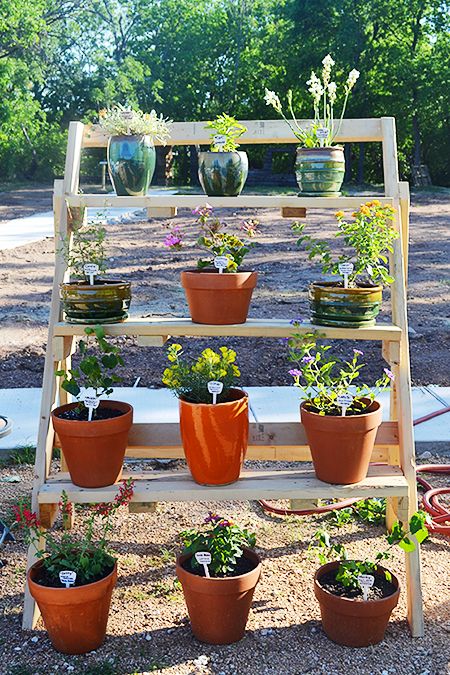This past Saturday, we had more than 25 eager gardeners attend our Container Gardening class, a part of the Grow Local Classes in the Teaching Garden series. Many of the participants live in apartment complexes or other housing situations where they have limited access to in-ground garden space or have very rocky terrain or poor soil in their yards. Unfortunately, this is the case for many Austinites as the city continues to grow and with such large quantities of limestone beneath much of the top soil. For these reasons, gardening in containers or raised beds is a great option for many gardeners in the area! Container gardening can also be great for folks with impaired mobility, gardeners with children, pest management issues, and aesthetics. The Grow Local team at SFC wants to make sure that everyone has a chance to grow their own food, so be sure to check out the tips for successful vegetable gardening in containers!
- Bigger is better! The biggest challenge with container gardening is watering since the soil dries out faster in containers than with in-ground gardens. A larger volume of soil in a larger container won’t dry out as fast, so use the biggest container as possible.
- Water frequently. Containers may need daily watering, and on very hot days might need to be watered twice. If a plant becomes too dry, the feeder roots become damaged. When the plant is finally watered, the plant’s energy will be used to grow new feeder roots and will not be used for flowering or fruit growth. If you can’t water by hand every day, look into getting self-watering containers, drip irrigation, or buried watering technique such as clay ollas.
- Use recycled materials. You can plant in just about anything! Shoes, kiddy pools, bathtubs, shopping carts, toolboxes, and even a piano! Instead of investing a lot of money in new materials, look around your house or neighborhood for objects that could be used as garden container. Just remember to always have holes at the bottom for proper drainage.
- Use a potting mix. When planting in a container, make sure that you have the proper potting mix. Just using garden soil will create a compacted planting media and plants’ roots will not have an opportunity to grow successfully. For that reason, we recommend purchasing a pre-made potting mix or making your own with one part garden soil, one part compost or peat moss, and one part perlite or vermiculite.
- Choose easy plants to grow. If you are just starting to grow in containers, try to choose plants that are easy to grow such as herbs, lettuce, and spinach. Most plants can grow in containers if their root systems can fit (you will need deeper pots for tomatoes, for example), and there are some dwarf varieties of certain vegetables that won’t grow as large that are great for container gardening.
For more gardening classes in the SFC Teaching Garden, be sure to check out the Classes and Events page for new classes starting in 2015!

